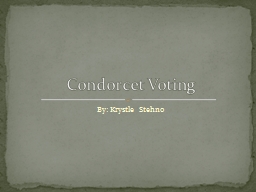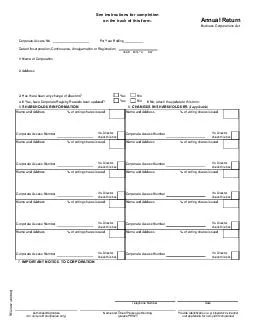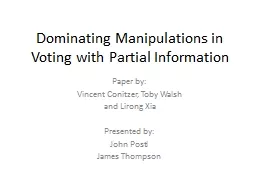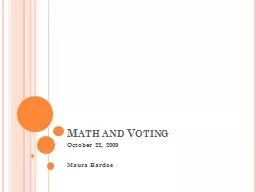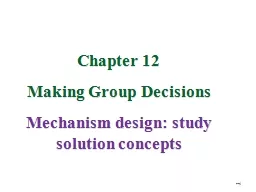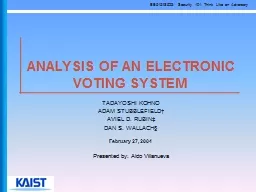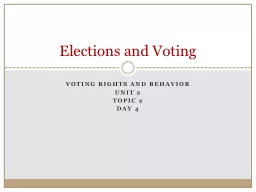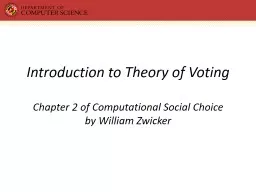PPT-By: Krystle Stehno Condorcet Voting
Author : everly | Published Date : 2023-10-30
In voting theory the goal is to make the largest number of people happy while allowing everyone to vote honestly Voting Theory httpwwwmcliborgvotingboothgif httpwwwhamburgmiusclerkimagesvotegraphicpng
Presentation Embed Code
Download Presentation
Download Presentation The PPT/PDF document "By: Krystle Stehno Condorcet Voting" is the property of its rightful owner. Permission is granted to download and print the materials on this website for personal, non-commercial use only, and to display it on your personal computer provided you do not modify the materials and that you retain all copyright notices contained in the materials. By downloading content from our website, you accept the terms of this agreement.
By: Krystle Stehno Condorcet Voting: Transcript
Download Rules Of Document
"By: Krystle Stehno Condorcet Voting"The content belongs to its owner. You may download and print it for personal use, without modification, and keep all copyright notices. By downloading, you agree to these terms.
Related Documents

